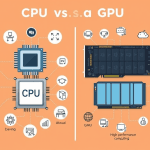Tutorial on Computer Ergonomics and User-Friendly Design
1. Introduction to Computer Ergonomics
Computer ergonomics focuses on designing workspaces and tools to fit the user, reducing physical strain and improving comfort. Poor ergonomics can lead to health issues like headaches, back pain, and neck pain. This tutorial will explain how to minimize these issues and explore how computers have been made more user-friendly for individuals with disabilities.
2. Minimizing Back and Neck Pain (Part 1a)
Back and neck pain are common issues for computer users due to poor posture and prolonged sitting. Here are two ways to minimize these problems:
- Proper Chair and Desk Setup
- Use an ergonomic chair that supports the natural curve of your spine.
- Adjust the chair height so your feet rest flat on the floor and your knees are at a 90-degree angle.
- Ensure the desk height allows your elbows to rest comfortably at a 90-degree angle while typing.
- Position the monitor at eye level to avoid tilting your head up or down.
- Take Regular Breaks and Stretch
- Follow the 20-20-20 rule: Every 20 minutes, look at something 20 feet away for 20 seconds.
- Stand up, stretch, and move around every hour to reduce muscle stiffness.
- Perform neck and shoulder stretches to relieve tension.
3. User-Friendly Computers for Persons with Disabilities (Part 1b)
Computers have been adapted to make them more accessible for individuals with disabilities. Here are examples:
(i) For Blind Users
- Screen Readers: Software like JAWS (Job Access With Speech) or NVDA (NonVisual Desktop Access) reads aloud text displayed on the screen.
- Braille Displays: Devices that convert on-screen text into Braille for tactile reading.
- Voice Commands: Voice-controlled assistants like Siri or Cortana allow users to operate computers without a visual interface.
(ii) For Users Without Hands
- Voice Recognition Software: Tools like Dragon NaturallySpeaking enable users to control their computer and type using voice commands.
- Head-Mounted Pointers: Devices that allow users to control the cursor using head movements.
- Foot Pedals: Pedals can be programmed to perform keyboard functions like clicking or scrolling.
4. Practical Tips for Better Ergonomics
- Keyboard and Mouse Placement: Keep them close to your body to avoid overreaching.
- Monitor Distance: Position the monitor about an arm’s length away.
- Lighting: Use soft, indirect lighting to reduce glare on the screen.
- Posture: Sit upright with your back supported and shoulders relaxed.
5. Conclusion
By following ergonomic principles and utilizing assistive technologies, computer users can reduce physical strain and improve accessibility. Whether you’re minimizing back pain or adapting computers for individuals with disabilities, small changes can make a big difference.
6. Quiz (Optional)
- What is the 20-20-20 rule, and how does it help reduce eye strain?
- Name two assistive technologies for blind users.
- How can foot pedals help users without hands?
DOWNLOAD TUTORIAL IN PDF
Oops! Unlock More Access Rights:
If you find that you are not subscribed, consider upgrading your account or subscribing to the necessary plan to gain access.
- COMPUTER SYSTEMS NOTES
 Notes on Computer Systems 1. Definition of a System 2. Definition of a Computer System…
Notes on Computer Systems 1. Definition of a System 2. Definition of a Computer System… - KCSE 2025 Computer Studies Project: Return Envelope Requirements
 Important Notice for Secondary Schools The Kenya National Examinations Council (KNEC) has released the official…
Important Notice for Secondary Schools The Kenya National Examinations Council (KNEC) has released the official… - Understanding Database Terminologies: Enforcing Referential Integrity and Validation RulesTutorial: Understanding Key Database Terminologies 1. Enforcing Referential Integrity Referential integrity is a fundamental concept in…
- Understanding Common Spreadsheet Errors: A Comprehensive Tutorial on #### and #NUM! Errors
 Comprehensive Tutorial on Spreadsheet Errors: #### and #NUM! Introduction Spreadsheets are powerful tools for data…
Comprehensive Tutorial on Spreadsheet Errors: #### and #NUM! Introduction Spreadsheets are powerful tools for data… - Understanding Key Microsoft Word Terminology: Text Wrapping and Column Breaks
 Microsoft Word Terminology In this section, we will describe key terms commonly used in Microsoft…
Microsoft Word Terminology In this section, we will describe key terms commonly used in Microsoft… - CPU vs GPU: A Comprehensive Guide to Understanding the Differences | Elimu Assistant Team
 Understanding the Difference Between CPU and GPU Introduction In the world of computing, both CPUs…
Understanding the Difference Between CPU and GPU Introduction In the world of computing, both CPUs… - Enhancing Computer Performance in Schools: Upgrade Your CPU and RAM
 Comprehensive Tutorial: Enhancing Computer Performance in Schools Introduction In the modern educational landscape, computer performance…
Comprehensive Tutorial: Enhancing Computer Performance in Schools Introduction In the modern educational landscape, computer performance…







